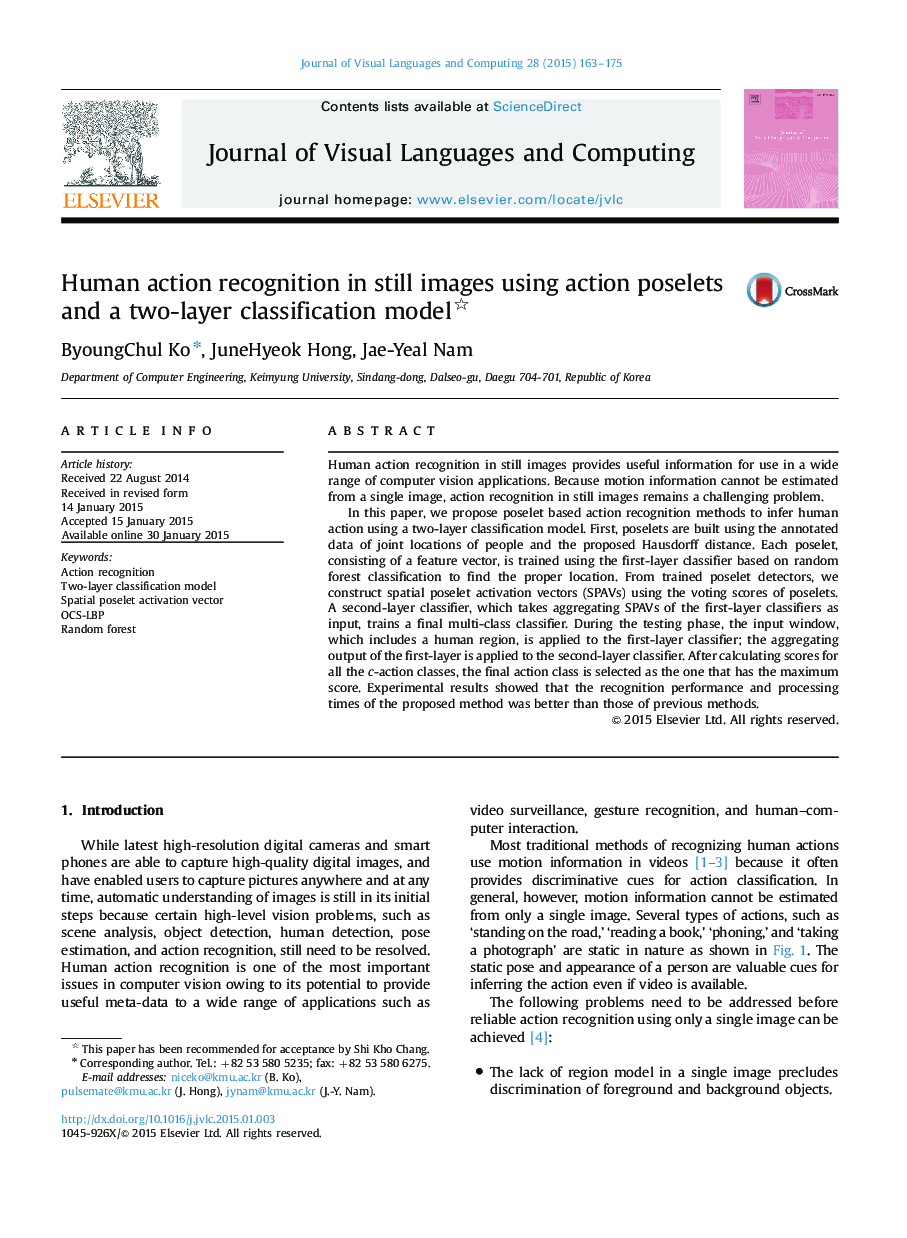| Article ID | Journal | Published Year | Pages | File Type |
|---|---|---|---|---|
| 6934781 | Journal of Visual Languages & Computing | 2015 | 13 Pages |
Abstract
In this paper, we propose poselet based action recognition methods to infer human action using a two-layer classification model. First, poselets are built using the annotated data of joint locations of people and the proposed Hausdorff distance. Each poselet, consisting of a feature vector, is trained using the first-layer classifier based on random forest classification to find the proper location. From trained poselet detectors, we construct spatial poselet activation vectors (SPAVs) using the voting scores of poselets. A second-layer classifier, which takes aggregating SPAVs of the first-layer classifiers as input, trains a final multi-class classifier. During the testing phase, the input window, which includes a human region, is applied to the first-layer classifier; the aggregating output of the first-layer is applied to the second-layer classifier. After calculating scores for all the c-action classes, the final action class is selected as the one that has the maximum score. Experimental results showed that the recognition performance and processing times of the proposed method was better than those of previous methods.
Keywords
Related Topics
Physical Sciences and Engineering
Computer Science
Computer Science Applications
Authors
ByoungChul Ko, JuneHyeok Hong, Jae-Yeal Nam,
